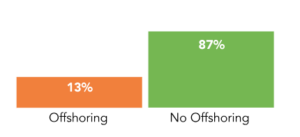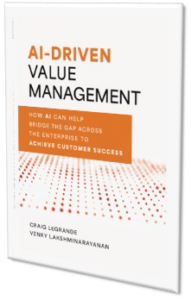Mainstay recently published findings from our 2024 Value Management: State of the Industry survey, which captures insights from value management leaders worldwide. The survey report looked at programs at companies of different sizes (from $1 billion to $10 billion in revenue), documented the types of program structures in use, and reported on the latest operational performance and business results. Here are some key takeaways from the report:
The Scaling Dilemma
The survey highlighted a long-standing dilemma for companies that have adopted value management (or value engineering) programs: While these programs consistently generate significant improvements in business outcomes — often doubling win rates for the largest, most strategic customers — scaling these programs can be prohibitively expensive.
How expensive? When you add up all the expert resources and management overhead you need to run these programs—including complex collaborations across sales, marketing and customer success teams—the annual budgets for VM programs can run into the tens to hundreds of millions of dollars. So, it’s no surprise that many organizations hit a wall and take a hard look at how much investment should be made into these programs.
In our work with top tech companies around the world, we’ve witnessed the remarkable growth of value engineering programs as well as some of the common pitfalls they run into, such as relying on traditional resource-intensive scaling methods. While these traditional VM programs succeed at driving revenue, they often come with a massive price tag as companies add people and technology to scale up their efforts and better orchestrate value management activities and insights.
AI: Empowering Value Management at Scale
In the past 18 months, AI has introduced transformative opportunities for scaling value management programs. To help organizations understand how AI can break through traditional barriers of cost and complexity, we’ve written a new book, AI-Driven Value Management with Wiley Publishing, to be released in early January.
Our conclusion: AI is the key to unlocking scalable, company-wide value management.
Our book breaks new ground in value management, presenting a portfolio of next-generation strategies, technologies and tools destined to transform how companies think about, create, and execute value selling programs. Complete with an easy-to-follow AI-Driven Value Management Blueprint, the book provides practical guidance to C-Suite leaders, VPs, and directors across sales, marketing, product, and customer success groups. Leveraging two decades of work in this industry, we bring proven strategies to achieve what we call “2-to-the-power-of-3” business outcomes—minus the exorbitant costs of scaling traditional value management programs.
We’re confident that AI will enable organizations to automate many of the manual, repetitive and costly tasks that hold back growth of their current programs, generating actionable insights and providing decision-making support at speed and scale. This means companies can extend value practices across all deals that can benefit from a business case and across all go-to-market functions, delivering massive revenue benefits without breaking the budget in the process.
In AI-Driven Value Management you will learn:
- How to integrate modern value-selling practices with AI across workflows and use cases
- Pragmatic value management strategies for optimizing customer engagement throughout the lifecycle
- Value management best practices and industry insights from executives at top enterprise tech companies like Salesforce, AWS, Google, HPE, ServiceNow, SAP, Oracle, and Nutanix.
Scaling value management no longer requires a big investment in people and overhead. With AI, organizations can leapfrog traditional VM approaches, achieving unified, at-scale value management without the resource drain. If your organization is looking to transform how it engages customers and boost business outcomes, the time to embrace AI-driven value management is now.
Our new book, AI-Driven Value Management: How AI Can Help Bridge the Gap Across the Enterprise to Achieve Customer Success, is now available for pre-order on Amazon here. Or learn more about the book on our website.
We recently participated in a podcast with ValueSelling Associates. In the B2B Revenue Executive Experience podcast, we highlight the two decade long history of value engineering and key tenants of the book regarding AI’s future impact to this burgeoning industry.
Meet the Authors
Craig LeGrande, Founder and CEO of Mainstay, and Venky Lakshminarayanan, CRO and President of Cron AI, bring decades of experience at the intersection of business and technology. With backgrounds spanning leading firms like Cisco, ServiceNow, and PwC, they provide a unique perspective on how AI can revolutionize value management for enterprise tech companies.


















